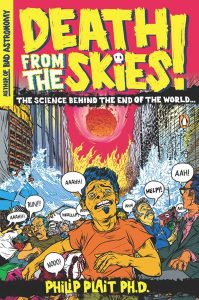Phil Plait is the best ‘Bad Astronomer’ on Earth
15 Sep 2018
‘Bad Astronomy’ blog is devoted to airing out the myths and misconceptions
By Matthew Wilburn King Most of us strive to be good at what we do, but Phil Plait, who has a Ph.D. in astronomy, became the best “Bad Astronomer” on Earth. How’d he do it? Picture the Earth traveling 67,000 miles per hour around a star that formed from a huge, rotating dust-and-gas cloud 4.6 billion years ago. Over 200 million miles away from that star is the asteroid belt, which separates the four rocky planets closest to the sun—Mercury, Venus, Earth and Mars—from the rest of the planets in our solar system. This region of space and its asteroids have been of interest to Plait for years, which led him to become a recognized expert on the doomsday scenarios that might unfold if an asteroid were to collide with Earth. But, what he really loves to do is help people understand the science behind our known universe. Plait is familiar with the literal astronomical mistakes being made in the news and popular media, including movies. In fact, correcting those mistakes was why he created his blog, “Bad Astronomy,” which he launched while in graduate school at the University of Virginia. “I would read stories and realize people didn’t understand the science behind the story that they were writing, and the correct answer is often more interesting than the misconceptions,” Plait says. “‘Bad Astronomy’ is devoted to airing out the myths and misconceptions.”
Visit Plait's blogPlait himself writes about but doesn’t obsess over such things; he continues to go about his business of science education. SyfyWire has picked up Plait’s Bad Astronomy blog. He’s also served as the head science writer for “Bill Nye Saves The World” and consulted on films like "Arrival." He is also currently a consultant for the CBS television series Salvation. What he loves most is seeing people understand something new. Once, a woman asked him: “What’s the coolest thing you know?” Plait recalls her question with glee: “Isn’t that the greatest question ever? When she asked me that question, I told her how stars are born and how planets are made,” he says. “By the end of the conversation she realized that the iron and calcium in our blood was made in stars that exploded billions of years ago. She had this dawning realization of her connection to the universe. I had never been happier to be a science communicator than at that point.” It was as if she realized for the first time what Carl Sagan meant when he said, “The cosmos is also within us, we’re made of star stuff.” Adds Plait: “It’s our responsibility to help people understand what’s behind Sagan’s words.”












